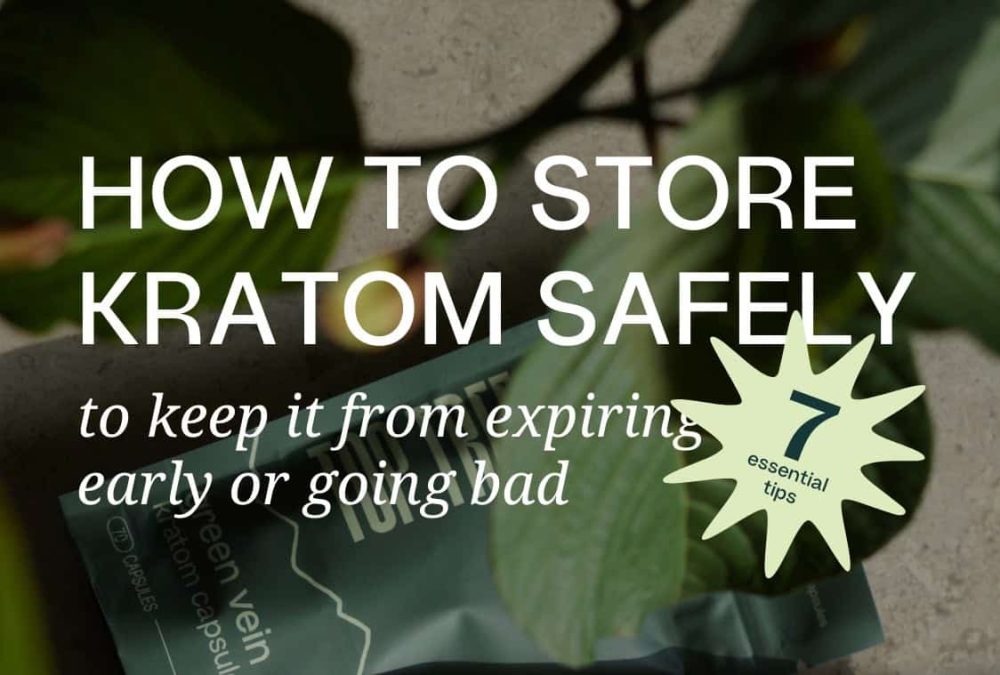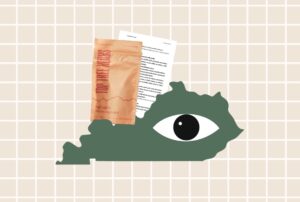The various products made with kratom leaves often travel a long way and go through many processing and packaging steps to get from forest to pantry. If these products aren’t manufactured and stored properly, they could have a short shelf life or even become contaminated. So whether you’ve never purchased kratom before or you’re a long-time consumer interested in a new product type, you might be wondering, does kratom expire?
Want to understand how kratom shelf life and expiration differ for various products, and how you can make your kratom last longer?
Learn the best ways to store kratom products to prevent them from going bad, find out how storage methods can impact alkaloid content, understand the risks of consuming expired kratom, and more.
- Factors That Affect Kratom Shelf Life
- Understanding Expiration Dates, Batch Numbers, and Storage Instructions
- How to Store Kratom: Best Methods for Each Type of Product
- Risks of Consuming Spoiled or Expired Kratom
- Signs That Your Kratom Has Gone Bad
- Final Notes on the Importance of Kratom Quality and Safety
Overview of Kratom Shelf Life Variables and Why They Matter
Questions like “does kratom go bad?” or “how long does kratom last?” are important to understand. The answers aren’t perfectly straightforward, and they can seriously impact your short-term and long-term health. Needless to say, no one wants to consume kratom that is ineffective or leaves them with a nasty stomach bug.
Kratom can have a shelf life of a few months to multiple years. How long your kratom product will last depends on a number of factors, from where you buy it to how you store it.
Here are the main topics related to kratom expiration and how to store kratom to prevent it from going bad. Keep reading for an in-depth review of each topic.
Factors that can reduce kratom shelf life:
- Source material quality
- Processing methods
- Packaging type
- Storage conditions
Kratom Storage DOs:
- Use airtight containers
- Store kratom in cool, dark, dry places
- Refrigerate leftover kratom tea, certain kratom liquids, and other products when necessary
- Separate smaller amounts from bulk bags
- Label your repackaged products
- Use clean measuring spoons and utensils
- Monitor your kratom for signs of spoilage
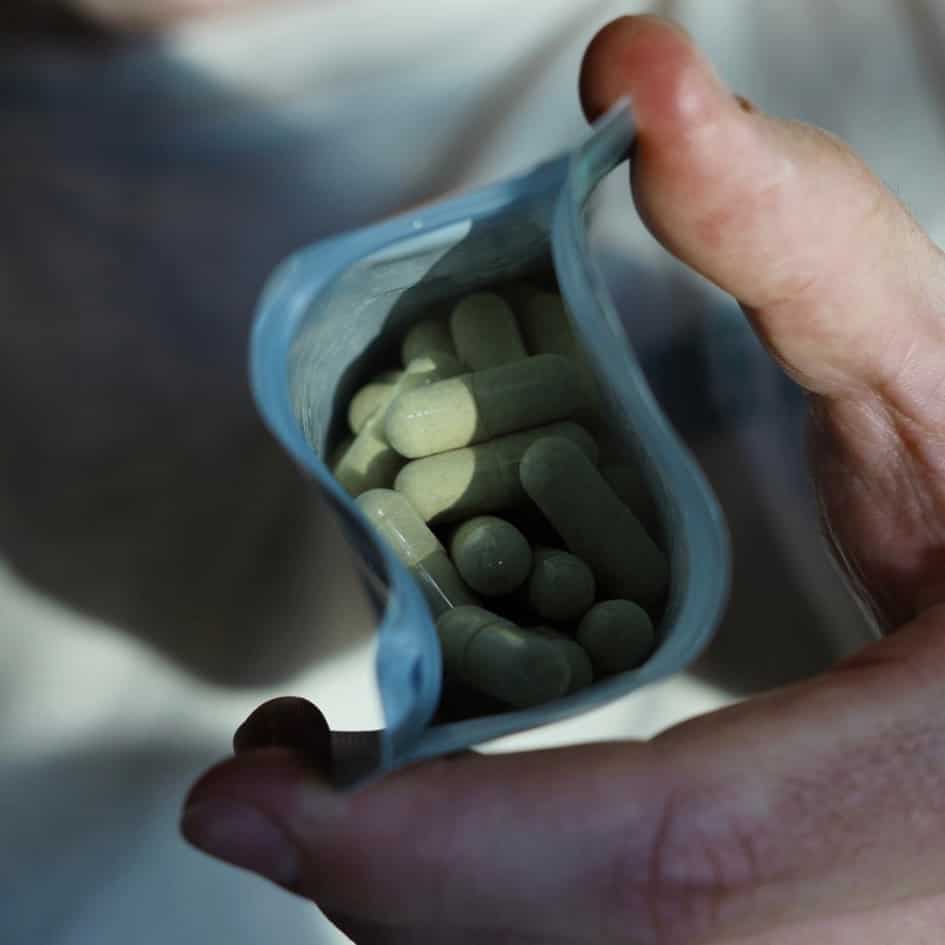
Kratom Storage DON’Ts:
- Buy kratom that has been poorly packaged or improperly stored by the manufacturer
- Store kratom in your bathroom or other humid areas
- Refrigerate kratom powder in a container that isn’t airtight
- Keep kratom in well-lit or warm places
- Use containers that aren’t airtight
- Contaminate your kratom by using dirty utensils
What to Look For on a Product Label
- Expiration date or best-by date (with some exceptions—see below)
- Storage recommendations
- Lot number or batch number
Many of these guidelines can be applied to a wide range of natural products, from kratom and kava to holy basil or mushroom powders. Over time, products can undergo chemical changes, grow mold or bacteria, and lose strength.
However, when reading the tips and tricks below, keep in mind that every brand and product is unique. Different products have different concentrations of active alkaloids and other compounds. Moreover, scientists haven’t yet studied kratom expiration for all product types and storage conditions.
Do you have specific questions about the shelf life or storage recommendations for the particular product you consume? Reach out to the individual company or manufacturer to get the most accurate information.
What Affects Kratom Shelf Life?
Kratom shelf life varies depending upon the type of kratom products you buy, how the company you buy from sources and manufactures their products, and how you store them at home. Here are the main factors you should consider when choosing which company to buy from and how to store your products after purchase.
1. Source Material Quality
As with any natural product, the quality of the source material can vary. Kratom products are derived from tropical trees. These trees can be susceptible to insect infestations, fungal infections, and other types of contamination.
Plus, the kratom trees’ genetics, growing conditions, and harvesting conditions can influence the composition of their active compounds.
2. Processing Methods
How kratom is dried, powdered, crushed, extracted, or processed in other ways can greatly affect its shelf life. Quality-controlled manufacturing is essential to providing safe products that have a sufficiently long shelf life.
Increasingly, kratom companies are following strict FDA regulations. In line with the Code of Federal Regulations (CFR) guidelines, many follow Certified Good Manufacturing Practices (CGMP) and lab-test their kratom for contaminants.
On the other hand, there are numerous “garage kratom vendors” who pack products in unprofessional environments. Often, these vendors don’t test for potential contaminants in their products. In some instances, the vendors might unknowingly let the kratom go bad before a customer even buys it.
3. Packaging Type
There are a few aspects of packaging type to consider when buying and storing kratom. How kratom is packaged (in glass bottles, plastic pouchs, tea boxes, capsules, supplement vials, etc.) will factor into how you should store it.
Additionally, the number of servings in each package—and thus, how many times you’ll be opening and closing the package before you finish it—can influence shelf life.

You shouldn’t buy kratom that is an unsealed container or packaged with a material that isn’t food-safe or appropriate for the product type. As such, any kratom packed in a paper bag or a Ziploc bag should be a huge red flag.
4. Storage Conditions
Kratom product quality can be significantly influenced by changes in the storage environment. This includes not only how you store kratom at home, but also how the manufacturer or retailer stored it before you bought it.
Exposure to light, air, heat, and moisture could change a product’s composition or accelerate the degradation process.
Dr. Chris McCurdy, Professor of Medicinal Chemistry at the University of Florida College of Pharmacy, explained that there are “ongoing stability studies that exceed 6 months at pharmaceutical conditions of room temperature/humidity.” However, “accelerated stabilities studies at elevated temperature/humidity failed after 30 days.”
Understanding Kratom Expiration Dates, Batch Numbers, and Storage Instructions
While you may be quite familiar with how to read and understand expiration dates for your favorite foods and supplements, understanding kratom expiration is a bit trickier.
Why do brands differ when it comes to sourcing, processing, and labeling their products? And how can you make sure you’re buying good kratom and storing it properly?
These issues are related to federal and state regulations (or lack thereof) and differences in brand quality. First, we’ll cover why kratom expiration dates differ for each product. Then, we’ll explain how to assess your products to understand their shelf life.
Are Kratom Expiration Dates or Best By Dates Legally Required?
The question, when does kratom expire? is more challenging to answer because kratom lacks federal regulation or consistent state regulation. Even if kratom products were federally regulated, though, their shelf life could still be difficult to discern.
Related: State By State Kratom Map and Guide to Kratom Legality
The FDA does not require manufacturers to include expiration dates on dietary supplements. However, it does require them for food products. Consequently, you’d expect to see expiration dates and best by dates on at least some kratom products.

But the problem is, the FDA has never determined which category kratom products fall into. Some individual states require manufacturers to add components like expiration dates to labels, but kratom laws differ in every state.
Plus, even when requirements do exist, some kratom companies still neglect to follow them. So you may notice that not all kratom products have expiration dates, regardless of whether they’re marketed as a food, supplement, or neither of the two.
Labeling Components to Look For
To avoid or manage any issues related to kratom expiration, make sure you look for the following info on your product labels:
- Expiration date or best-by date (if required)
- Safe storage recommendations
- Lot or batch number
Be wary of kratom products that don’t have comprehensive product labels. It’s important to know a product’s strength and recommended serving size before consumption. Plus, lack of transparency and adherence to regulations in labeling by a business could correspond to lack of proper quality control and safety standards in manufacturing and other business practices.
If you have a negative reaction to a kratom product, call the manufacturer to alert them. If the kratom product was contaminated prior to purchase, a large number of consumers could be affected. Companies that don’t use lot numbers put their consumers at risk, because they can’t properly retest products or issue recalls if necessary.
How Long Does Kratom Last?
Kratom leaves’ effects are largely attributed to their alkaloids, such as mitragynine or speciociliatine. These compounds are sensitive to environmental conditions. Exposure to high temperatures, light, moisture, and oxygen can cause them to degrade into active metabolites or inactive compounds.
The way kratom products are processed can either preserve, concentrate, or diminish their strength. For example, many of the major alkaloids are unstable in hot, acidic conditions. So if you get hot kratom tea with lemon from a kava bar, you might want to make sure it’s fresh and hasn’t been sitting around for a long time.
Comparing Product Types
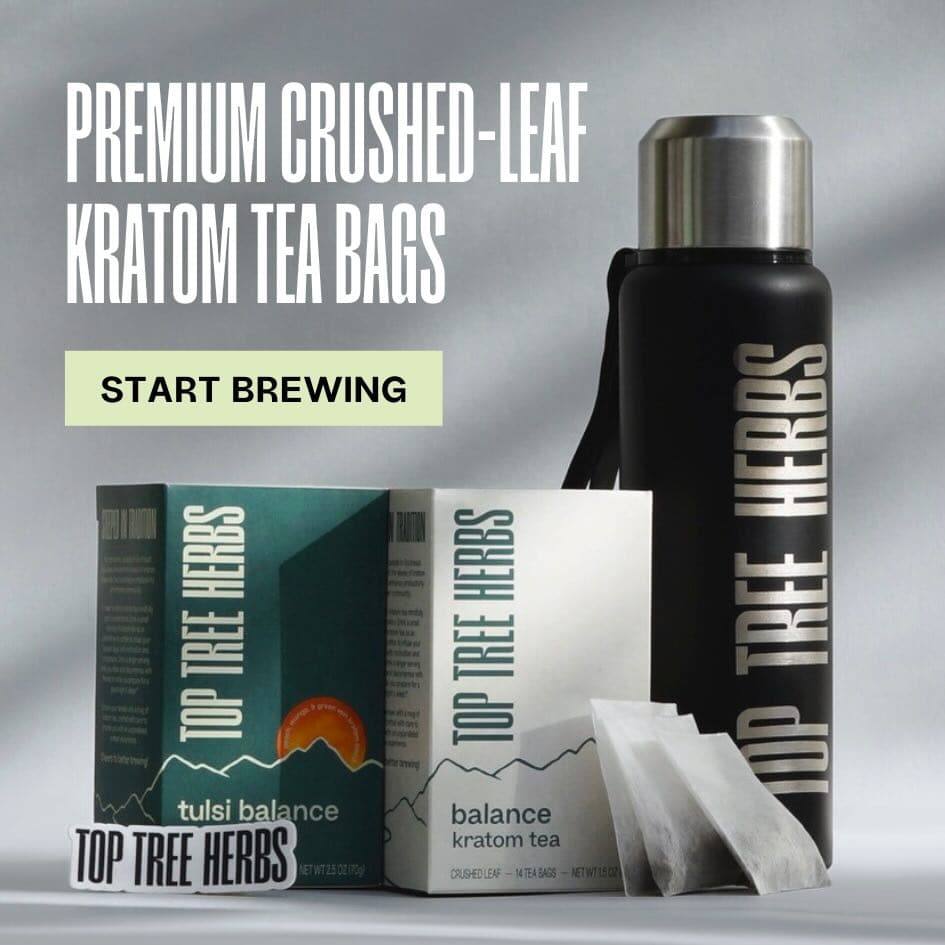
When you put aside the above factors like sourcing and storage, are there product types that generally last longer?
Anecdotally, it seems that vacuum-sealed kratom powder can have a very long shelf life. Dr. McCurdy mentioned that his team retested kratom powder more than 10 years after it was manufactured. Though they haven’t conducted formal studies over such extended periods, their retesting showed that the alkaloid composition of the powder remained largely unchanged.
It’s uncertain whether or not other products—from kratom powder packed into capsules to extract powders to liquid shots—have the same longevity. The stability studies on powdered whole leaf kratom can’t necessarily be applied to the range of new product formulations (and packaging types) on the market.
Crushed-leaf kratom in tea bags and botanical kratom blends can retain their effectiveness for over 2 years. The aroma of kratom blends with other herbs and spices may fade slightly over this time. After brewing, kratom tea typically lasts 2-7 days in the fridge.
The shelf life of other kratom liquids depends largely on the processing methods and other ingredients in the liquid.
Ready-to-drink products, like New Brew seltzers, often have a best by date that is one year post-production. Meanwhile, some extract shots like OPMS Black Liquid Extract do not include a best by date on the label.
Tips for How to Store Kratom
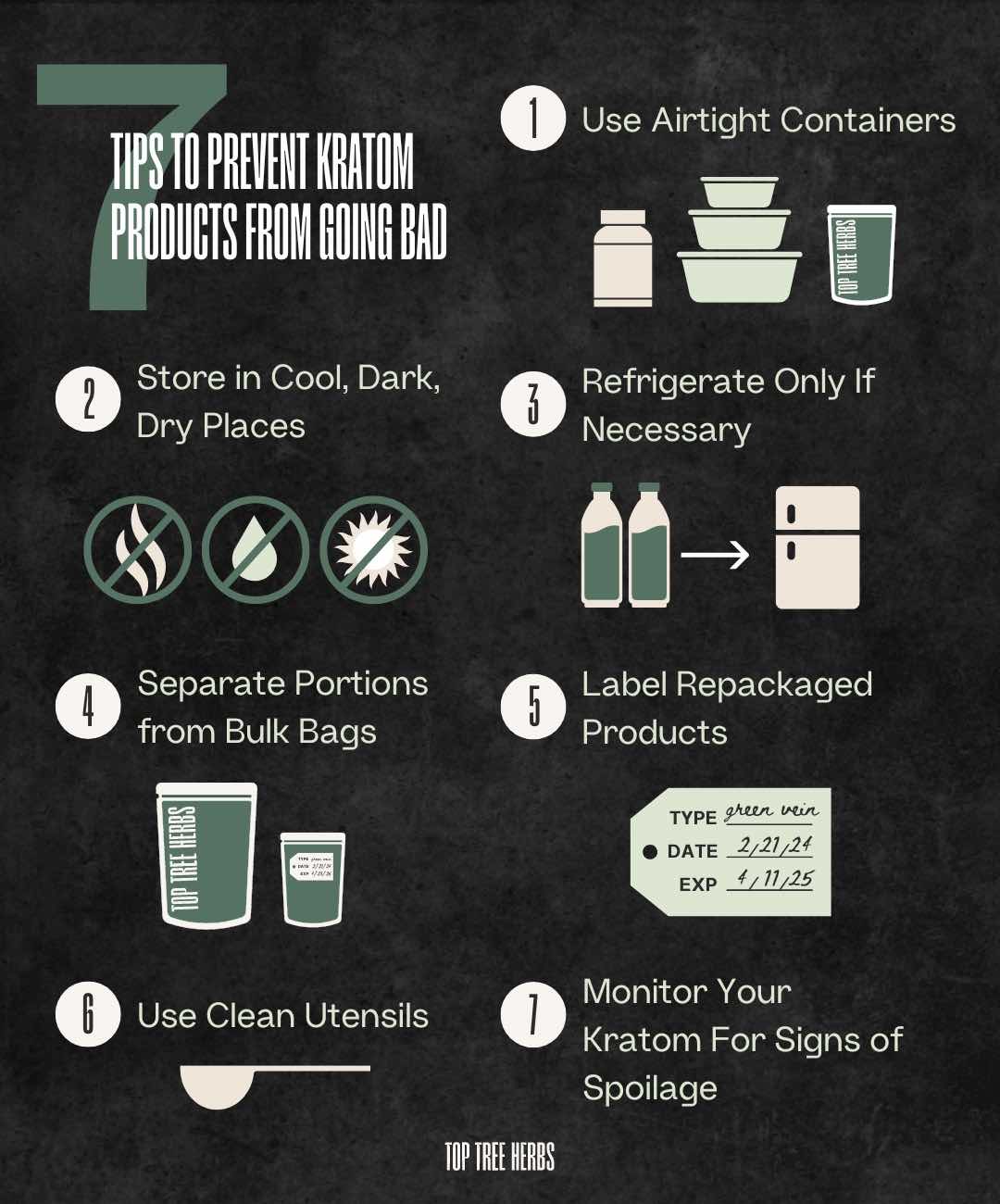
Whether you like to keep it simple and buy one type of kratom powder in bulk, or you prefer to sample a wide range of product types and rotate between them every day, you can follow some simple tips to make your kratom last longer.
1. Use Airtight Containers
Important for: All Products
Exposure to air can lead to oxidation. This may degrade active compounds in kratom, just as it can for other natural products.
A number of kratom products are sold in resealable bags that are easy to push the air out of after each use. However, if you bought kratom in a bag that can’t be resealed, consider transferring it to another container. Glass jars with airtight seals, vacuum-sealed bags, or containers specifically designed to block out air are excellent choices.
2. Store Kratom in a Cool, Dark, Dry Place
Important for: Powder | Capsules | Tea Bags | Tinctures | Tonics | Shots
Light, heat, and moisture are three more primary factors that can degrade natural products. They may accelerate chemical reactions that lead to a change in the chemical composition of the various compounds in the products. Plus, they can accelerate spoilage by making the kratom more attractive to various types of mold and bacteria.
Many kratom brands package their products in containers that prevent light from entering. For example, you can often find capsules packed in supplement vials that are made with opaque plastic or amber-colored glass.
Liquid kratom products may also be affected by light and temperature. The tinted glass bottles used for kratom tonics and tinctures are typically meant to block out UV and other wavelengths of light to prevent any damage to what’s inside.
Related: Cost/Benefit Comparison of Liquid Kratom Product Options
3. Refrigerate (Only) When Necessary
Important for: Ready-to-Drink Kratom | Extract Shots | Brewed Tea | Tonics
Many multi-serving extracts or ready-to-drink kratom products need to be refrigerated after you open them. For some, manufacturers recommend that you finish the extra serving(s) within 12-48 hours of opening the bottles, even if you store them in the fridge.
Typically, you shouldn’t place powders or other dry kratom products in the fridge or the freezer. When you take them out, they can condensate. This moisture can lead to bacterial or mold growth. So if you need to store powder in the fridge or freezer for some reason, make sure the packaging is airtight, and let the it come to room temperature before opening it.
4. Separate Servings from Bulk Bags
Important for: Bulk Powder | Loose Leaf Tea | Bulk Capsules
If you purchase kratom in bulk, consider repackaging some of it. One kilo of kratom may contain anywhere from a couple months to a couple years worth of kratom, depending upon how much you consume each day. Constantly exposing a bulk bag to air and other environmental factors may speed up its degradation.
So you might not want to open a bulk bag on a daily basis to scoop out single servings. Instead, take out a portion of kratom once a week or once a month.
Place this portion in a clean and dry glass jar, food-safe container, or airtight pouch that will still be resistant to light, moisture, and contaminants. Take out your individual servings from this container. Don’t open the bulk bag again until you use up what’s in the container.
5. Label Your Re-Packed Products
Important for: Bulk Powder | Loose Leaf Tea | Bulk Capsules
If you repacked your kratom into smaller portions, make sure to label the containers. Add the expiration date that’s on the product label, the date you repacked it, and the kratom type (if you have more than one at home).
That way, if you end up storing the kratom for a long time or throwing away the original packaging, you won’t forget important details about when the kratom will expire.
6. Avoid Cross Contamination
Important for: All Products
Cross-contamination can occur when kratom comes into contact with substances or surfaces that have been exposed to contaminants or other products. This may lead to the transfer of bacteria, molds, or unwanted chemicals into your kratom.
To prevent cross-contamination, always use clean, dry utensils when handling kratom. Ensure that the area you use for storage is clean and free from potential contaminants.
7. Monitor for Signs of Spoilage
Important for: All Products
Regularly check your kratom products for any signs of spoilage, such as changes in color, texture, or smell. Discard any products that show signs of mold growth or other indicators of contamination.
You can find more info below on the signs you should look out for, and the potential risks of using expired kratom products.
Risks of Consuming Spoiled or Expired Kratom
While “expired” and “spoiled” are often used interchangeably, they each mean something different. This might seem fairly obvious to most, but it’s important to review nonetheless.
“Expired” refers to a product that has surpassed its expiration date, as determined by the manufacturer. This date is an estimate of how long the product maintains its quality and safety standards.
An expired kratom product (or a product that has passed its best-by date) may not necessarily be harmful if consumed soon after the expiration date, but its quality and effectiveness might be diminished. For some products, using them past the expiration date can pose health risks as well.
“Spoiled” indicates that a product has undergone detrimental changes in its physical, chemical, or microbial states, making it unsuitable or unsafe for consumption. Spoilage can be caused by factors like bacterial growth, oxidation, and exposure to unsuitable environmental conditions.
Consuming spoiled products is generally unsafe, even if the product has not yet reached its expiration date. It can lead to food poisoning or other health issues.
Both E. coli and Salmonella have been detected in kratom products in the past. Kratom consumers have anecdotally reported extreme gastrointestinal issues from certain kratom products. Careful vendor selection and product storage can help mitigate these serious health concerns.
Signs That Your Kratom Has Gone Bad
Despite your best efforts, it’s still possible for your kratom product to become contaminated or expire before you finish it.
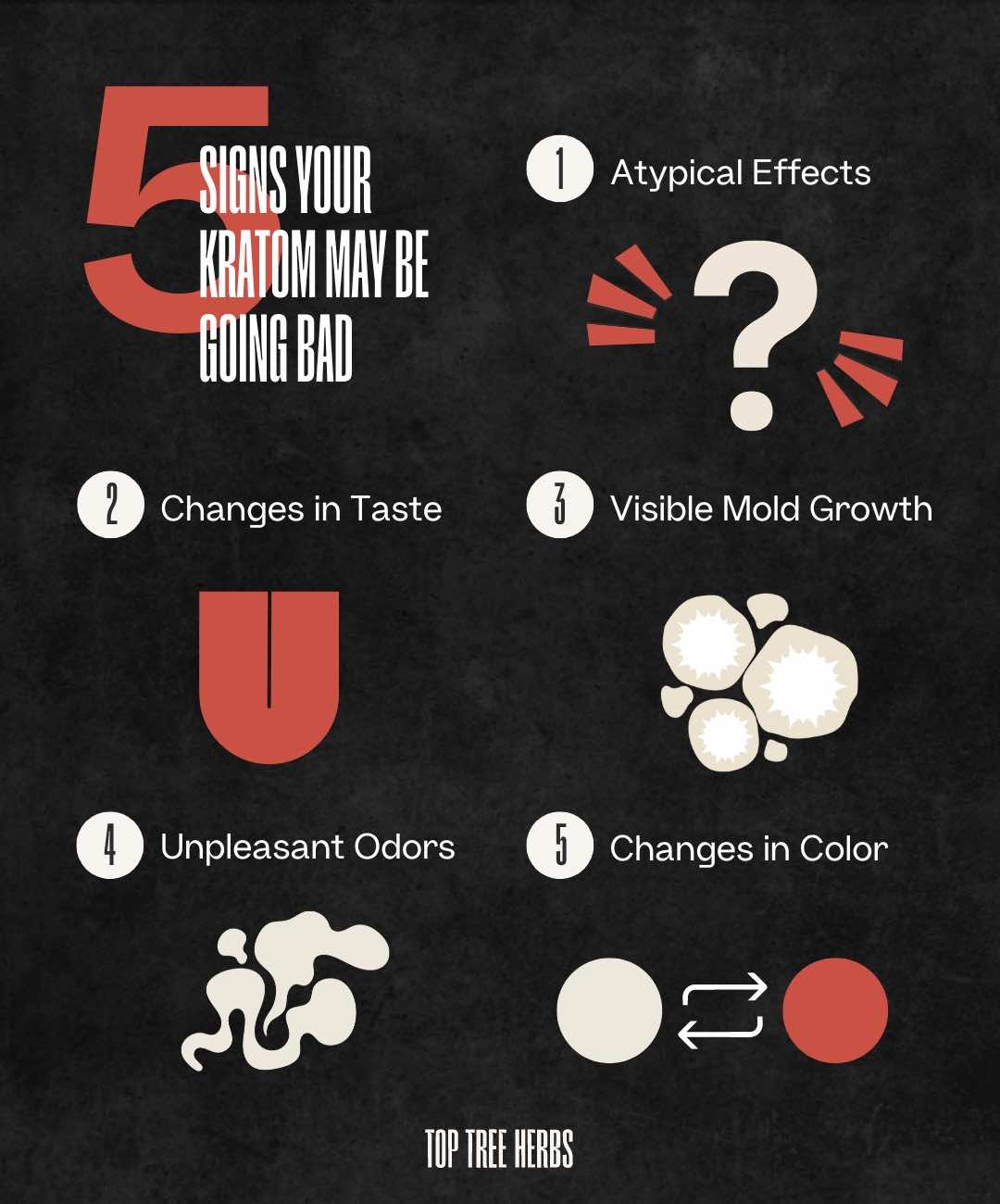
Spoiled products often show noticeable changes which indicate that you shouldn’t use them. These changes can occur before or after an expiration date, depending upon how the product has been stored. Signs of spoilage include:
- Unpleasant odors
- Changes in color or texture
- Changes in taste
- Visible mold growth
- Atypical and unpleasant effects after consumption
If you experience negative effects from your kratom, you should contact your healthcare professional immediately.
Feeling sad that your kratom is past the point where you can consume it? Still want to do something useful with it? Depending upon the exact condition it’s in, you might be able to use expired kratom for a different purpose, like adding it to your compost pile.
More Research is Needed to Understand How Quickly Kratom Expires
There isn’t extensive research into how kratom product shelf life varies for each product type or individual formulation.
We can potentially make inferences based on how various formulations of other natural products compare to each other. However, it’s not always helpful to compare natural products. The active compounds in each differ in their chemical stability under a range of environmental conditions.
Importance of Kratom Quality and Safety
While kratom leaves may be generally well-tolerated in certain serving sizes, that doesn’t mean that all kratom products are safe in all circumstances.
Does kratom expire? Can kratom go bad? Absolutely. However, with quality-controlled manufacturing and safe storage, you can ensure that your kratom stays effective and contaminant-free for a longer time.
Always opt for kratom from reputable vendors who provide clear, transparent information about their product to ensure you’re getting a safe, high-quality kratom.
